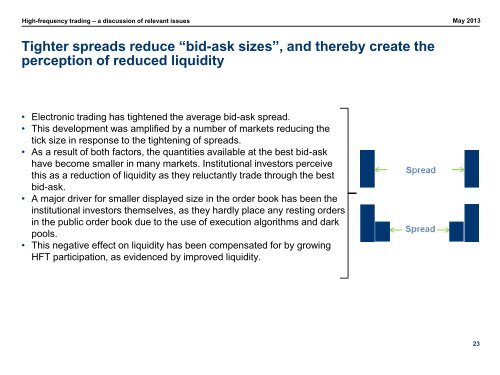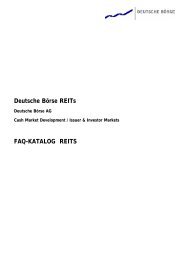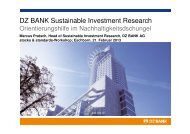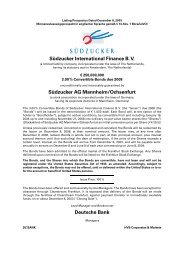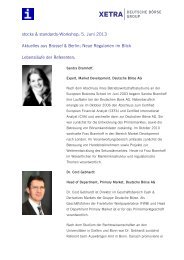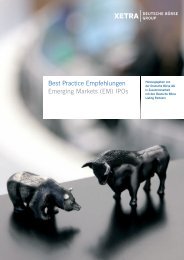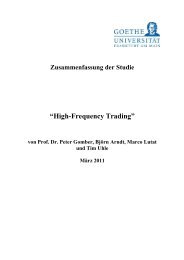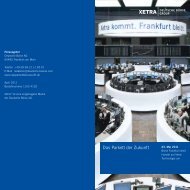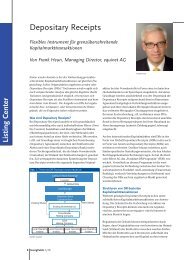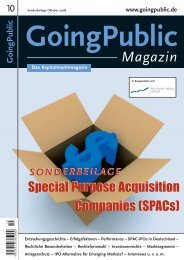High-frequency trading – a discussion of relevant issues - Xetra
High-frequency trading – a discussion of relevant issues - Xetra
High-frequency trading – a discussion of relevant issues - Xetra
- No tags were found...
You also want an ePaper? Increase the reach of your titles
YUMPU automatically turns print PDFs into web optimized ePapers that Google loves.
<strong>High</strong>-<strong>frequency</strong> <strong>trading</strong> <strong>–</strong> a <strong>discussion</strong> <strong>of</strong> <strong>relevant</strong> <strong>issues</strong> May 2013Tighter spreads reduce “bid-ask sizes”, and thereby create theperception <strong>of</strong> reduced liquidity• Electronic <strong>trading</strong> has tightened the average bid-ask spread.• This development was amplified by a number <strong>of</strong> markets reducing thetick size in response to the tightening <strong>of</strong> spreads.• As a result <strong>of</strong> both factors, the quantities available at the best bid-askhave become smaller in many markets. Institutional investors perceivethis as a reduction <strong>of</strong> liquidity as they reluctantly trade through the bestbid-ask.• A major driver for smaller displayed size in the order book has been theinstitutional investors themselves, as they hardly place any resting ordersin the public order book due to the use <strong>of</strong> execution algorithms and darkpools.• This negative effect on liquidity has been compensated for by growingHFT participation, as evidenced by improved liquidity.23


